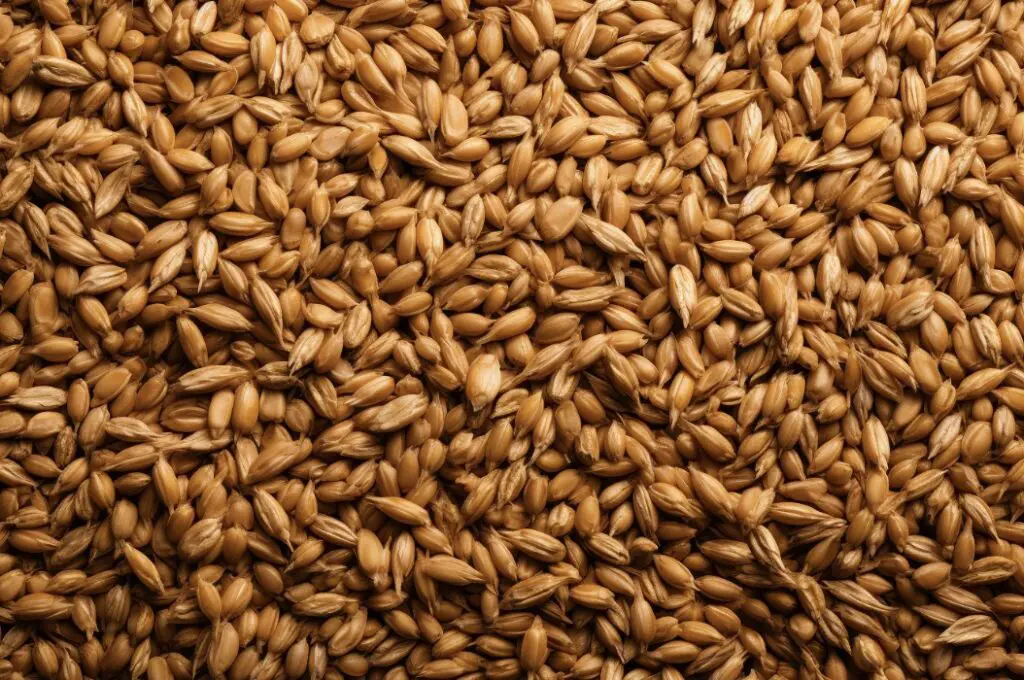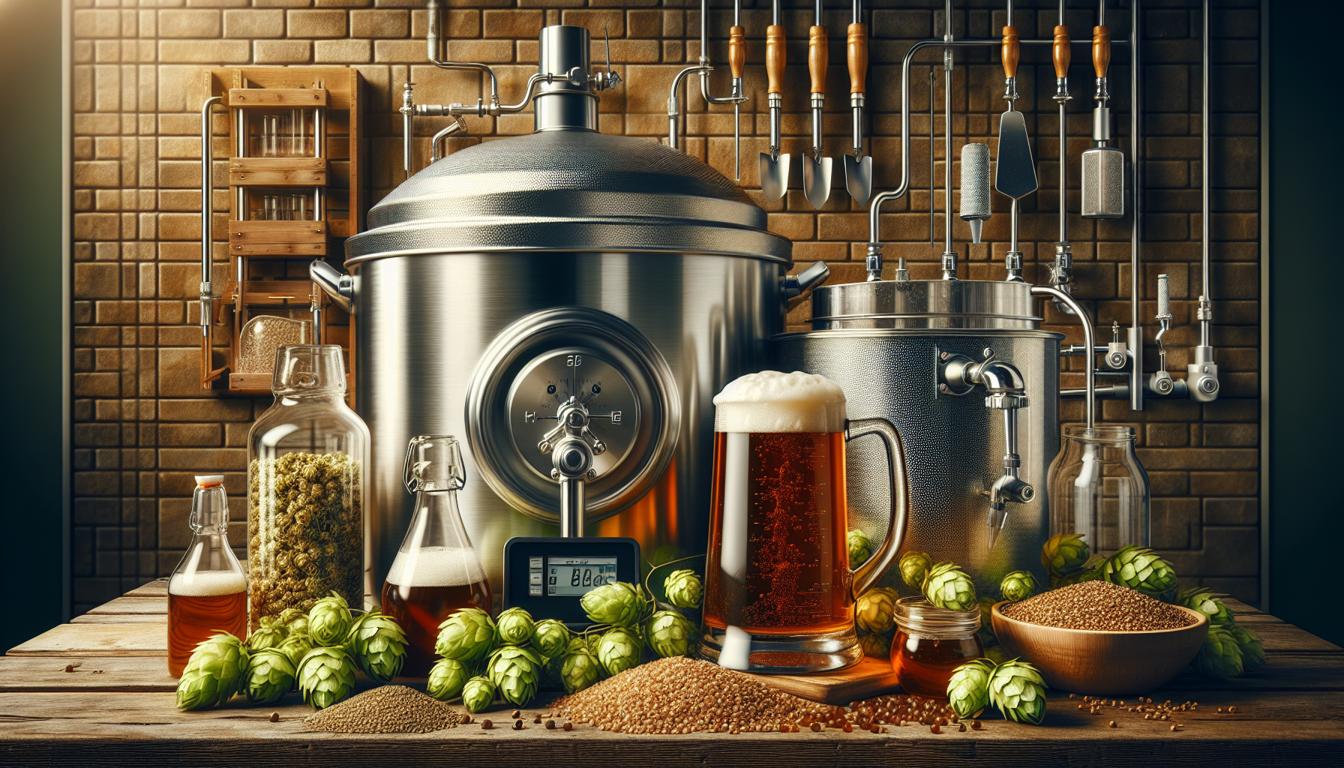Introduction: Unraveling the Secrets of a Classic Beer Style
Welcome, fellow brewers, to a captivating journey into the world of brewing! Today, we embark on a quest to create a 5-gallon batch of beer that embodies the essence of a classic beer style. As we delve into the intricacies of brewing, we will explore the history, key characteristics, and techniques necessary to craft the perfect brew.
Our chosen beer style for this adventure is an American Pale Ale (APA). Originating in the United States in the early 1980s, the APA is a testament to the creativity and innovation of American brewers. This style is known for its balance between malt sweetness and hop bitterness, resulting in a refreshing and flavorful beer with a moderate alcohol content.
Ingredients: Selecting the Finest Elements for Brewing Excellence
Malts
To capture the essence of an APA, we must begin with a solid foundation of malts. For this recipe, we will use a combination of Pale Ale malt and Caramel malt. The Pale Ale malt provides a rich, biscuity flavor, while the Caramel malt adds a touch of sweetness and complexity.

Hops
Hops are the true stars of an APA, imparting both bitterness and aroma. We will use a combination of Cascade and Centennial hops to achieve the desired balance. Cascade hops lend a distinct citrusy, floral character, while Centennial hops contribute a slightly more resinous and piney flavor.
Yeast
To ensure a clean fermentation and accentuate the hop character, we will use a neutral American Ale yeast. This strain will allow the malt and hop flavors to shine, without overpowering the beer with additional yeast-derived flavors.
Water
Water is often overlooked in brewing, but it plays a crucial role in the final product. For an APA, we want a slightly hard water profile, as it helps to enhance the hop bitterness and bring out the malt flavors. If your local water is soft, you can adjust it by adding minerals to achieve this desired profile.
Recipe: Unveiling the Secrets of a Perfectly Balanced APA
Now that we have gathered our ingredients, it’s time to put them to use and craft a 5-gallon masterpiece. Follow these detailed instructions to ensure success:
Step 1: Mashing
1. Heat 3 gallons of water to 152°F (67°C) in your brew kettle.
2. Add the crushed Pale Ale malt and Caramel malt to a mesh bag and place it in the kettle.
3. Stir the grains gently to ensure even distribution and prevent any clumping.
4. Allow the grains to steep for 60 minutes at a temperature range of 148-152°F (64-67°C), maintaining a stable temperature throughout the process.
5. After the mash, remove the grain bag and allow it to drain into the kettle, extracting as much of the sugars as possible.
Step 2: Boiling
1. Bring the wort to a rolling boil and add the first hop addition: 1 ounce of Cascade hops.
2. Boil the wort for 60 minutes, ensuring a steady and controlled boil.
3. After 45 minutes, add 0.5 ounce of Centennial hops to the boil. This will contribute to the beer’s bitterness and aroma.
4. With 10 minutes remaining in the boil, add the remaining 0.5 ounce of Cascade hops for a burst of fresh hop aroma.
Step 3: Cooling and Fermentation
1. After the boil, rapidly cool the wort to a temperature range of 68-72°F (20-22°C).
2. Transfer the cooled wort to a sanitized fermenter, leaving behind any hop debris or trub.
3. Pitch the American Ale yeast into the fermenter, ensuring the yeast is at the appropriate temperature and vitality.
4. Attach an airlock to the fermenter and store it in a cool, dark place with a stable temperature.
5. Allow the beer to ferment for approximately 10-14 days, or until the specific gravity remains stable for several days.
Step 4: Dry Hopping and Bottling
1. After primary fermentation is complete, add 1 ounce of Centennial hops to the fermenter for dry hopping.
2. Allow the beer to sit on the dry hops for 3-5 days, extracting their aromatic goodness.
3. Prepare your bottles by thoroughly cleaning and sanitizing them.
4. Prime the beer with 3/4 cup of corn sugar to achieve the desired carbonation level.
5. Carefully transfer the beer to the bottles, ensuring minimal oxygen exposure.
6. Cap the bottles and store them at a temperature range of 68-72°F (20-22°C) for 2-3 weeks to allow for carbonation and conditioning.
Conclusion: Brewing Mastery Unveiled
Congratulations, my fellow brewers! You have successfully crafted a 5-gallon batch of American Pale Ale, showcasing the true artistry of brewing. Let’s recap some key points to ensure your future brewing endeavors yield equally exceptional results:
– Malt selection: Choose the appropriate malts to achieve the desired flavor profile. Pale Ale and Caramel malts are ideal for an APA.
– Hop varieties: Cascade and Centennial hops bring the characteristic citrus, floral, and piney flavors to an APA.
– Water profile: Consider the importance of water and adjust it to achieve the desired hardness for an APA.
– Mashing: Maintain a stable temperature during the mashing process to extract the desired sugars from the grains.
– Boiling: Follow a precise hop addition schedule to balance bitterness and aroma.
– Fermentation: Use a neutral American Ale yeast and ensure proper temperature control during fermentation.
– Dry hopping: Add hops during secondary fermentation to enhance the aromatic qualities of the beer.
– Bottling: Thoroughly clean and sanitize bottles, and prime them with the appropriate amount of sugar for carbonation.
– Patience: Allow the beer time to condition and carbonate, ensuring a harmonious blend of flavors.
Remember, brewing is an art form that combines science, creativity, and passion. Embrace the process, experiment with different ingredients, and continue to refine your skills. Cheers to your brewing mastery and may your future batches be filled with success!





Leave a Reply
You must be logged in to post a comment.